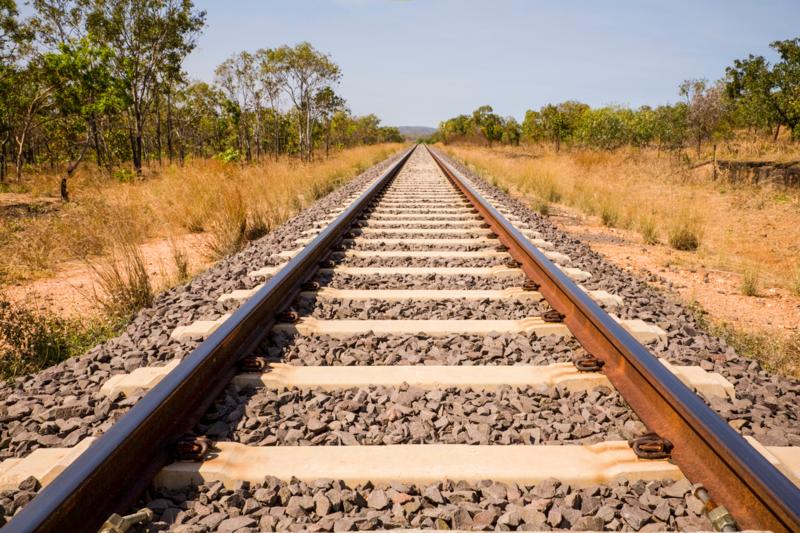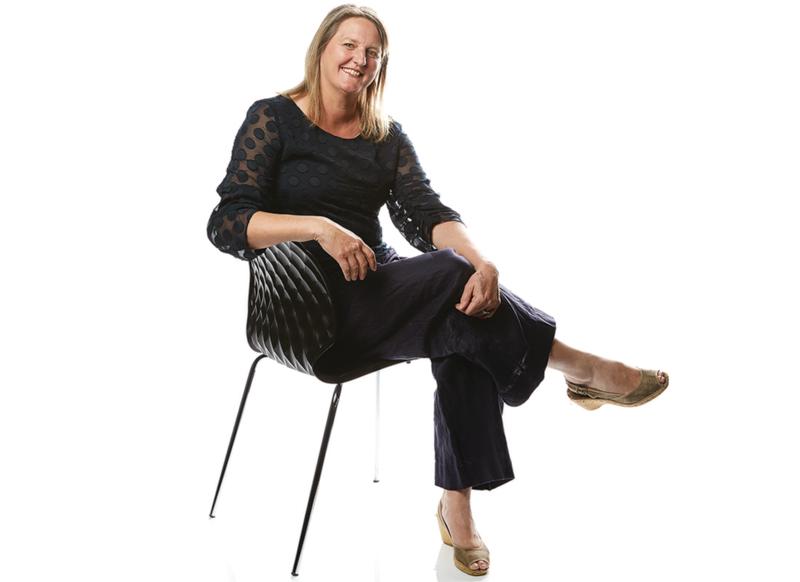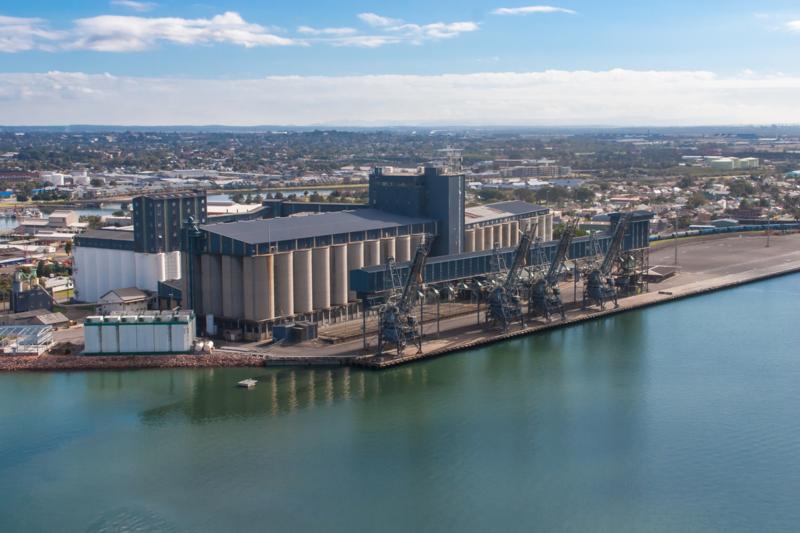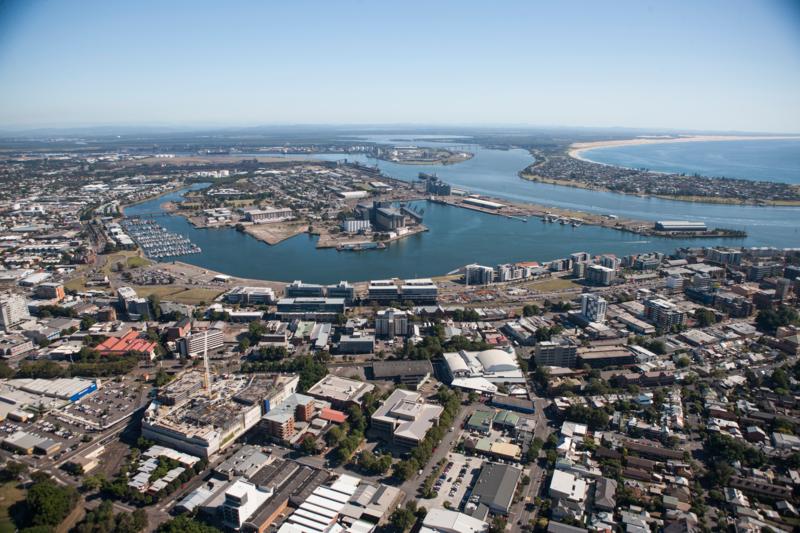TO most of us, all railway tracks look much the same – with sleepers, steel rails, ballast – and those moments in the country when the bells ring, safety barriers glide down and wagons rattle by.
But not all tracks in NSW are the same. While some can take up to 30 tonnes per axle (Tonne Axle Load, aka TAL), others can take just 19 tonnes (see freight rail facts, page 50). That huge difference can add up to big dollars for our state’s farmers in the costs they incur to deliver grain to market.
So NSW Farmers has been lobbying hard for several years to bring the state a unified rail network with a higher TAL.
 NSW Farmers are lobbying for the state to have all rail at 25 TAL. Source: Getty Images.
NSW Farmers are lobbying for the state to have all rail at 25 TAL. Source: Getty Images.
NSW Farmers’ treasurer Rebecca Reardon chaired a workshop in mid-2017 which brought together bulk handlers, freight companies, rail operators and government observers to work on a whole-of-industry approach to the Fixing Country Rail initiative. At the time of the workshop, she was chair of NSW Farmers’ Grains Committee.
“We considered the gaps that needed to be filled to ensure full connectivity across the entire NSW network, that was achievable with the largest funds available, and what would have the biggest impact on the supply chain costs,” she tells The Farmer.
Universal rail size needed for seamless connectivity
The Association’s policy is to advocate for a lift in the capacity of the main rail line to a minimum standard of 25 TAL. “Inland Rail is also being built to 25 TAL, so there will be seamless connectivity, not just to NSW ports but interstate,” Rebecca says. “It was fantastic to have everyone around the table talking about maximising benefits to the whole industry, not just one company or sector.”
RELATED ARTICLES ON INLAND RAIL:
-
Meeting over Inland Rail concerns
-
NSW Inland Rail route remains a hot debate
-
Farms being divided for Inland Rail
The benefits to farmers will be immediately tangible in lower transport costs. A study by the Australian Rail Track Corporation (ARTC) and CSIRO has shown growers could save in excess of $10 per tonne if trains could carry more grain upcountry to the Port of Newcastle. Paying $40 a tonne to get farmers’ grain to port instead of $50 would make a big difference to the bottom line.
Financial benefits of universal rail size
Rebecca has first-hand knowledge of the financial impacts of freight costs. She worked in grain trading and logistics for 20 years, and farms east of Moree in North West NSW. She and husband Dan primarily crop wheat, sorghum, cotton and chickpeas, as well as running some sheep.
 NSW Farmers treasurer, Rebecca Reardon. Photo by: Nick Cubbin.
NSW Farmers treasurer, Rebecca Reardon. Photo by: Nick Cubbin.
“We have to be strategic in targeting investment in high-TAL full connectivity as this will make the biggest difference to productivity. It isn’t efficient to have a grain train that can only be partially loaded, because one tiny section of the trip is on tracks with a low weight limit.
“The difference between 21 and 25 TAL is 16 tonnes of grain for every wagon, so that’s going to have a huge impact on productivity. It will encourage greater investment in new rail equipment, and in a competitive market will increase returns to growers.”
She believes the benefits could be even higher than those calculated by the ARTC and CSIRO.
“I estimate that lifting gross wagon payloads and running longer trains at 5,000 tonnes and higher will reduce the current Moree to Newcastle rail rate of close to $40 to more like $20, provided we have a competitive, efficient and transparent market,” says Rebecca.
“The difference between 21 and 25 TAL is 16 tonnes of grain for every wagon, so that’s going to have a huge impact on productivity.”
The ARTC demonstrated the cost benefits of increased load capacity in December 2015 with a mega train – 1,250m long, loaded at Narrabri and Moree with more than 5,000 tonnes of wheat, double the capacity of the standard grain train at the time. The mega train delivered the grain to the Port of Newcastle.
 The Port of Newcastle is an important hub for grain farmers. Source: Getty Images.
More improvements needed to cut costs
The Port of Newcastle is an important hub for grain farmers. Source: Getty Images.
More improvements needed to cut costs
ARTC manager business development Michael Clancy says that started a conversation about what the network was capable of. “We’re continuing to allow longer and heavier trains at slower speeds from Moree, following the example set by the mega train. It’s added about half an hour to the trip, but provided a 30% increase in payload,” Michael says.
“Meanwhile, engineers have done a lot of work across the entire network to see if similar changes could be made elsewhere without a large investment.
“The route standard is made up of track condition and underlying infrastructure combined with train length and speed. Older bridges and culverts are often the limiting factor, and technology is allowing us to conduct a better assessment of what’s safe.”
DID YOU KNOW: The steel tracks on Hunter Valley coal lines are replaced every four-to-seven years because of wear and tear.
Michael says looking at the network as a whole brings benefits on top of increased loads.
“Once everything’s up to the same standard, it takes a lot of risk out of operating trains. The same locomotives and wagons can be used anywhere in the state, and bulk handlers can use the full capacity instead of having to calculate how much they can load on each wagon.
“It also means looking at the connections around the state, so trains have a diversion available if there’s a breakdown or flood on one section of line. That increases reliability and gives freight operators more incentive to use rail.”
Jock Carter, executive director of the Newcastle Agri Terminal, also supports efforts to increase rail standards. “Freight is always competing with passenger trains for access, or the number of ‘paths’. More grain on each path means a better payload ratio and reduced overall costs,” he says.
 The Newcastle Agri Terminal supports better rail standards in order to reduce costs. Source: Port of Newcastle.
The Newcastle Agri Terminal supports better rail standards in order to reduce costs. Source: Port of Newcastle.
“During the last big grain harvest in NSW, the major constraint on exports was rail capacity – if we had access to larger, heavier trains, then more grain would have been shipped out. A lot of the rolling stock is 50 years old, but there’s not a lot of incentive to buy higher-capacity wagons if we can’t fill them, or use them anywhere we want. The worst place you can go becomes the limiting factor.”
Jock says improved freight costs will also increase the price of grain up-country, whether growers export their crop or not.
“International markets set the price of grain. If it’s $300 per tonne and costs $50 to get to port, the farmgate price is $250. If freight only costs $40, domestic buyers will have to offer $260 to compete.”
RELATED ARTICLES ON EXPORT:
-
Winemaking family finds export markets fruitful
-
From paddock to Asia
-
Can the China boom last?
Freight rail facts
- At least six route standards apply to rail lines in NSW, ranging from 19.5 to 30 Tonne Axle Load (TAL). There are usually four axles per wagon, so a 30-TAL line can take 120 tonnes gross mass per wagon – the wagon itself, plus the load.
- Factors include the weight of steel in the tracks themselves, the type and configuration of sleepers, the strength of culverts and bridges, and the length and speed of trains.
The length of overtaking lanes also has to be taken into account.
- One of the oldest sections of track in NSW is north of Moree (the Weemelah Line), where 60 pounds per yard (30kg per metre) of steel line was laid in the early 1900s.
- The Inland Rail system will be built with 60kg of steel per metre of track with concrete sleepers at 25 TAL, allowing an average speed of 80km/hr and a top speed of 110km/hr. Hunter Valley coal trains run on 30 TAL at 60km/hr. Intermodal trains on 21 TAL can run up to 115km/hr.